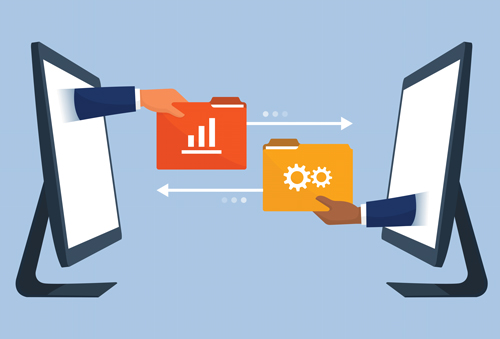Advanced Persistent Threats (APTs): What You Need to Know

Introduction:
Understanding Advanced Persistent Threats (APTs)
In today's digital landscape, Advanced Persistent Threats (APTs) represent one of the most insidious and sophisticated types of cyber threats. Unlike typical cyber-attacks, APTs involve a prolonged and targeted process, often orchestrated by highly skilled and well-funded adversaries.
These attackers aim to infiltrate networks undetected, maintain a persistent presence, and extract valuable information over extended periods. APTs are particularly relevant in cybersecurity due to their potential to cause significant damage, disrupt operations, and compromise sensitive data. Understanding APTs is crucial for organizations to develop effective detection, monitoring, and response strategies, ensuring robust defence against these relentless threats.
Nature of APTs
Defining APTs
Advanced Persistent Threats (APTs) are a class of cyber threats distinguished from other attacks by their highly targeted and persistent nature. Unlike generic attacks, APTs focus on specific organizations or sectors, leveraging sophisticated techniques to maintain long-term access. These threats aim to steal sensitive information or cause significant disruption without detection, making them particularly dangerous. APTs can be in existence for months prior to detection or becoming evident through the delivery of a ransom demand. Ransomware delivered through APT’s are characterised through the deliberate choice of timing of the ransom to achieve maximum disruption to maximise the potential economic reward extracted by the cybercriminals.
Characteristics of APTs
APTs are characterized by their persistence, sophistication, and targeted approach. Persistence involves maintaining ongoing access to the network, often through backdoors and repeated intrusions. Sophistication refers to the advanced methods and tools used, such as zero-day exploits and custom malware. The targeted approach means APTs are meticulously planned and executed against specific organizations, and can be aligning with geopolitical or simply economic objectives.
Common Targets
Industries and organizations traditionally targeted by APTs include government agencies, financial institutions, defense contractors, healthcare service providers and critical infrastructure providers. These sectors are attractive to malicious actors due to the high value of the information they hold, including intellectual property, sensitive communications, and personal data. However recent development has seen all sectors capable of providing an economic reward (ransom) also face significant APT threats due to the emerging darkweb criminal supply chain where APTs are on sold to other criminal organisations for ransom extortion.
Infiltration Techniques

Initial Intrusion Methods
APTs typically begin with initial intrusion methods such as phishing, malware, and exploiting vulnerabilities. Phishing involves sending deceptive emails to trick recipients into revealing sensitive information or installing malicious software. This method often uses social engineering to exploit human psychology. Malware, including viruses, worms, and Trojans, can be deployed to compromise systems, steal data, and create backdoors for continued access. Exploiting vulnerabilities in software or hardware allows attackers to gain unauthorized entry into networks. These vulnerabilities may be previously unknown (zero-day exploits) or unpatched known weaknesses.
Establishing a Foothold
Once inside the network, attackers focus on establishing a foothold to maintain access. This involves installing backdoors, creating persistent malware, and using legitimate credentials to avoid detection. Attackers may also modify system files and settings to ensure their presence remains hidden and resilient to system reboots and updates. The use of legitimate administrative tools, known as "living off the land," helps attackers blend in with regular network activity, making detection more challenging.
Escalating Privileges
To maximise their control and access within a network, attackers aim to escalate their privileges. This process involves exploiting additional vulnerabilities, cracking passwords, or leveraging misconfigurations to gain higher-level permissions. Privilege escalation allows attackers to access sensitive data, modify system configurations, and move laterally across the network. By obtaining administrator or root-level access, they can execute commands, exfiltrate data, and deploy additional malicious code and payloads with minimal resistance. This stage is critical for the attackers to achieve their objectives while maintaining a low profile.
APT Lifecycle
Initial Reconnaissance
Before launching an attack, APT attackers conduct extensive initial reconnaissance to gather information about their target. This phase involves passive and active techniques, such as scanning networks, social engineering, and monitoring public and private data sources. Attackers aim to understand the target's network topology, security measures, employee roles, and potential vulnerabilities. Information collected during this phase helps in crafting tailored attack strategies, making it easier to infiltrate the network without raising alarms.
Lateral Movement
After gaining initial access, attackers focus on lateral movement within the network to achieve their objectives. This involves moving from one compromised system to others, exploiting additional vulnerabilities, and using stolen login credentials. Attackers often employ techniques like pass-the-hash, pass-the-ticket, and exploiting trust relationships between systems. The goal is to navigate the network stealthily, reaching high-value targets such as databases, file servers, and administrative systems. Effective lateral movement is crucial for maintaining persistence and gathering valuable data.
Data Exfiltration
The second to final stage in the APT lifecycle is data exfiltration, where attackers steal sensitive information while maintaining stealth. This process involves packaging and encrypting data to avoid detection by security systems. Attackers may use legitimate network channels, such as email or cloud storage services, to transfer data without triggering alarms. Additionally, they might employ covert communication methods, like steganography or custom encryption protocols, to obscure the data transfer. Maintaining stealth during exfiltration ensures prolonged access and minimizes the chances of being discovered.
Commercial Exploitation
The final stage is the monetisation of the APT, this may involve the on-sell of the network access to another criminal organisation, the sale of stolen Intellectual property or commercially sensitive information on the black market, the ransoming of the target organisation for stolen private or sensitive information and/or the deployment of ransomware or denial of service attacks with associated ransom demands.
Detection and Monitoring
Indicators of Compromise (IoCs)
Recognizing Indicators of Compromise (IoCs) is essential for detecting APT attacks early. IoCs are signs that a network may have been compromised, including unusual network traffic patterns, unexpected file changes, and abnormal user activity. For instance, a sudden increase in outbound data, unauthorized access attempts, or the presence of unfamiliar files can signal an APT attack. Regularly updating and monitoring IoCs can help security teams identify potential threats quickly and take appropriate action to mitigate risks before significant damage occurs.
Real-time Monitoring Tools
Utilizing real-time monitoring tools is crucial for early detection of APTs. Security Information and Event Management (SIEM) systems collect and examine log data from multiple sources, offering a detailed overview of network activity. Intrusion Detection Systems (IDS) and Intrusion Prevention Systems (IPS) monitor network traffic for suspicious activities and known threat patterns. By integrating these tools that are now often AI enabled, organizations can detect anomalies, correlate events, and respond to potential threats in real time, enhancing their ability to prevent and mitigate APT attacks effectively.
Behavioural Analysis
Behavioural analysis involves identifying unusual patterns and activities that deviate from normal behaviour. This method goes beyond traditional signature-based detection by focusing on the context and behaviour of users, applications, and devices. For example, if an employee's account starts accessing sensitive data outside of regular hours or from unusual locations, it may indicate a compromise. Implementing AI based behavioural analysis helps detect sophisticated threats that traditional methods might miss, providing an additional layer of security against APTs.
Response Strategies
Incident Response Planning
Effective incident response planning is critical for preparing for APT incidents. A structured plan includes defining roles and responsibilities, establishing communication protocols, and outlining procedures for detecting, analyzing, and mitigating threats. Regular training and simulation exercises ensure that the response team is prepared and can act swiftly. Detailed reviews of past incidents and continuous improvement of the response plan is essential for adapting to evolving threats. An effective incident response plan minimizes damage, reduces recovery time, and enhances overall security posture.
Containment Strategies
Containment strategies focus on isolating affected systems to prevent further damage during an APT attack. This may involve segmenting the network, disabling compromised accounts, and deploying virtual private networks (VPNs) for secure communication. Quick containment is crucial to limit the attacker’s movement within the network and protect sensitive data. Implementing automated tools that can quarantine affected mobile devices, and restrict suspicious activities can significantly enhance the containment process.
Eradication and Recovery
Eradication and recovery involve removing threats and restoring systems to normal operations. This process includes identifying and eliminating malware, closing exploited vulnerabilities, and restoring compromised systems from clean backups. Thoroughly cleaning the network ensures no remnants of the attack remain. Recovery also involves validating that all systems are secure, testing the functionality of infected systems, and monitoring for any signs of residual threats. Effective eradication and recovery strategies help ensure the integrity and reliability of the organization's IT infrastructure post-incident.
Notable APT Attacks

Several high-profile APT incidents have showcased the sophistication and persistence of these threats. One notable historic example is the Stuxnet attack, which targeted Iran's nuclear facilities. This attack involved a highly advanced worm that exploited multiple zero-day vulnerabilities, demonstrating the capability of APTs to cause significant physical and operational damage.
Another example is the APT29, also known as "Cozy Bear," which targeted various other government entities and private organizations worldwide. This group used phishing emails and custom malware to infiltrate networks and exfiltrate sensitive information. Similarly, the APT10 group, associated with Chinese intelligence, targeted managed IT service providers to access a wide range of clients' data, highlighting the extensive reach and impact of APT attacks. Closer to home the Medibank Private cyber event at the end of 2022 was executed as an APT.
Lessons Learned
From these high-profile APT attacks, several key takeaways have emerged. Firstly, the importance of robust and proactive cybersecurity measures cannot be overstated. Organizations need to invest in advanced detection and response tools and conduct regular security audits.
Secondly, employee training and awareness are crucial in mitigating phishing and social engineering attacks.
Thirdly, collaboration between the public and private sectors is essential to share threat intelligence and enhance overall security posture. Finally, a well-prepared incident response plan can significantly reduce the damage and recovery time in the event of a ransomware attack or an APT attack.
Best Practices
Implementing Robust Security Measures
Implementing robust security measures is essential to strengthen defences against APTs. A multi-layered security approach, combining next generation firewalls, IDS/IPS, and antivirus solutions, creates multiple barriers against intrusions. Regular patch management closes vulnerabilities that APTs exploit, while software defined network orchestration and network segmentation limits lateral movement, ensuring a breach in one area doesn't compromise the entire network.
Strong authentication methods, such as multi-factor authentication (MFA), add another security layer, making unauthorized access more challenging. Encrypting sensitive data in transit and at rest ensures that even if data is intercepted, it remains unreadable.
Investing in advanced threat detection and alerting tools, like SIEM systems, allows for real-time monitoring and analysis of network traffic for suspicious activities. Regular security audits and vulnerability assessments help identify and rectify security gaps, ensuring continuous improvement.
Employee Training and Awareness
Employee training and awareness are crucial in defending against APTs, as human error is often the weakest link in cybersecurity. Regular training programs should educate staff on recognizing phishing attempts, social engineering tactics, and safe online practices. Simulated phishing exercises can help employees recognize and respond to potential threats effectively. Additionally, fostering a security-conscious culture encourages employees to report suspicious activities and follow security protocols diligently.
Regular Security Audits and Health Checks
Regular security audits are vital for the continuous evaluation and improvement of an organization’s security posture. These audits involve comprehensive assessments of security policies, procedures, and controls to identify weaknesses and areas for improvement.
Organizations can proactively mitigate potential threats and vulnerabilities by regularly conducting vulnerability assessments. Audits also ensure compliance with industry standards and regulations, providing a benchmark for security performance. Implementing the recommendations from these audits enhances the overall security framework and resilience against APTs.
Conclusion
Staying Ahead of APTs
Proactive measures are vital in staying ahead of Advanced Persistent Threats (APTs). Regularly updating and patching systems, implementing advanced threat detection tools, and maintaining a robust incident response plan are essential. Organizations must prioritize continuous monitoring and improvement of their cybersecurity posture to mitigate the evolving threat landscape posed by APTs.
Future Trends
The evolution of APTs will likely see attackers employing more sophisticated techniques, including the use of artificial intelligence and machine learning to enhance their stealth and efficiency. As cyber defences improve, APT groups will adapt, developing new methods to evade detection and exploit vulnerabilities. Emerging defence strategies will focus on predictive analytics, behavioural analysis, and enhanced collaboration between organizations and cybersecurity entities.
Embracing these advanced technologies and fostering a culture of security awareness will be crucial in countering the future advancements of APTs. Proactively adopting these strategies ensures a resilient defence against the ever-evolving nature of cyber threats.
Conculsion
Stay ahead of Advanced Persistent Threats (APTs) with Beyond Technology’s expert cybersecurity services. Our team of experienced consultants provides tailored strategies to protect your organization from sophisticated cyber threats. Don’t wait for an attack—proactively secure your organisation today. Contact Beyond Technology to schedule a consultation and fortify your defences against APTs. Visit our website or call us now to learn more about our comprehensive cybersecurity services. Your security is our priority.
FAQ
What are the best measures to avoid APT attacks?
To prevent APT attacks, organizations should use a multi-layered security strategy, including regular security audits, advanced threat detection tools, employee training, and endpoint protection. Network segmentation, multi-factor authentication, and regular software updates are also crucial. Encrypting sensitive data both in transit and at rest further protects against breaches. These measures collectively minimize vulnerabilities and enhance the ability to detect and respond to potential threats early, reducing the risk of APT attacks.
How do APT attackers execute their cyber attacks?
APT attackers execute their attacks in stages: reconnaissance to gather information, initial compromise through phishing or exploiting vulnerabilities, establishing a foothold with malware or backdoors, and escalating privileges. They conduct internal reconnaissance to map out the network and identify valuable data. Finally, they exfiltrate data quietly while maintaining persistence within the network, often for extended periods, to avoid detection and maximize damage.
What are the targets of APT attacks?
APT attacks target organizations with valuable data or strategic significance, such as government agencies, financial institutions, energy companies, and defense industries. Healthcare organizations and technology companies are also prime targets due to the sensitive information they hold. Attackers aim to steal intelligence, disrupt operations, or gain competitive advantages, making these sectors particularly vulnerable to long-term, sophisticated cyber threats.
What do attackers do during the APT's execution stage?
During the execution stage, attackers collect and exfiltrate valuable data while moving laterally across the network to access more systems. They cover their tracks by obfuscating data and deleting logs, ensuring their actions go unnoticed. Attackers also maintain control by updating backdoors or malicious code, allowing them to regain access if temporarily blocked, all while avoiding detection.
Why are APT attacks hard to detect?
APT attacks are hard to detect due to their stealthy nature, long dwell times, and the use of customized malware that evades conventional security tools. The attacks unfold over multiple phases, with lateral movement and persistence techniques blending in with legitimate network traffic. These factors make it challenging for traditional detection methods to identify and respond to these sophisticated threats.



